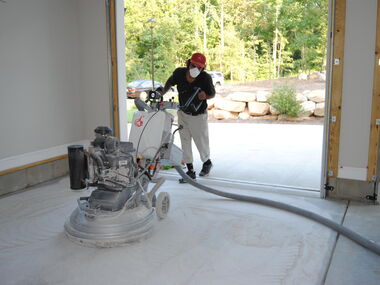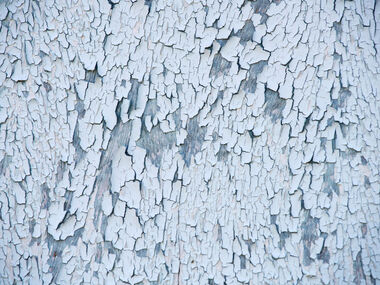What Is the Best Deck Stain for Pressure Treated Wood?

Wood is used for all kinds of construction projects due to its natural durability, flexibility, and beauty. It’s no wonder, then, that most outdoor decks are mostly built from wood. Despite wood’s inherent strength, however, wooden features are also vulnerable to a number of environmental threats, including sunlight, moisture, pests, and impact. We’ve all seen damaged, chewed-up, rotted wood, and this is the last thing you want to happen to your deck.
Pressure-treating wood is one way to protect it from deterioration and prolong its lifespan. This process involves injecting preservative chemicals inside the lumber via the application of intense pressure. When all is said and done, pressure-treated wood is less susceptible to pest infestation, rot, moisture intrusion, and more.
If your deck is constructed from pressure-treated lumber, it’s already highly protected from the elements. That said, staining your deck can further preserve its integrity and enhance its appearance. The only question is: what’s the best deck stain for pressure-treated wood? Let’s explore your options.
What to Know About Pressure-Treated Wood
Should You Stain Pressure Treated Wood?
Before we dive into different types of deck stain, we must go over whether or not staining pressure-treated wood is recommended or effective.
Depending on the age of the pressure-treated lumber and the process by which it was treated, the wood might still contain moisture by the time it’s used to construct your deck. It’s imperative to allow wet pressure-treated wood to dry completely before applying stain. Otherwise, the coatings won’t have much of an effect, and they might prolong the drying process.
But how long do you have to wait to stain pressure-treated wood? There is no definite answer that works for all wood types. The time it takes for the wood to dry varies depending on sun exposure, weather patterns after the construction is complete, and how long the wood sat in the lumber yard. You may have to wait a few weeks to several months before staining your deck.
You can use what’s known as the “sprinkle test” to see if your deck is dry enough for staining. You may do this approximately 60 to 90 days following the deck installation. Simply splash a small amount of water on the wood and see how long it takes for your deck to absorb it. If the water droplets disappear within 10 minutes, you can stain; if it takes longer, give your wood more time to dry before staining.
The sprinkle test gives you a rough approximation. If you want to be absolutely sure that your pressure-treated wood is dry, consider using a moisture meter. The ideal moisture content is around 15% or below. Don’t stain the wood if you get a reading above this percentage because that means the wood is still susceptible to mold growth and rotting.
If, on the other hand, the wood has been kiln-dried or is otherwise dry as a bone, staining is viable and often recommended.
Different Deck Stain Options
One of the reasons choosing a deck stain is so difficult is that there are so many varieties. Deck stains differ in opacity, tint, thickness, special features, and composition. The best deck stain for your deck might not be the best choice for someone else’s deck; it’s a matter of determining your needs and nailing down your preferences. Below, we’ll break down the three main types of deck stain to consider.
Water-Based Deck Stain
Water-based stains are light, breathable, and eco-friendly, containing no volatile organic compounds (VOCs). These products also tend to retain their color for a long time, and they’re highly resistant to mold and mildew growth.
Oil-Based Deck Stain
Because they’re richer in chemicals, oil-based deck stains aren’t deemed eco-friendly like their water-based counterparts. That said, these thicker stains tend to deliver a more even finish, offer deeper penetration, and require less maintenance over the long term.
Specialty Stains
You’ll also find a number of specialized stain products on the market. These products come with different features, such as advanced UV protection or water resistance. Some stains are purpose-built for specific applications, such as pressure-treated wood. It’s worth noting that most stains advertised for pressure-treated wood are oil-based, not water-based.
Finding the Right Deck Stain Color
Other important considerations when choosing a deck stain are color and opacity. Stains for pressure-treated wood come in various colors, although the options aren’t as comprehensive as paints. The majority of stain colors fall within the brown color palette, such as dark mahogany and oak brown.
Stains can be translucent, semi-transparent, and solid. A translucent stain is a clear sealer that protects the pressure-treated wood while allowing its natural colors and details to shine through. The semi-transparent option allows some of the wood grain to show through but with the added color of your choice. The last type of finish, the solid stain, is more paint than stain. It can hide imperfections and create a more uniform look.
The semi-transparent option for deck staining pressure-treated wood is a popular pick among homeowners, probably because it strikes a perfect balance between protection and showcasing the wood’s natural beauty. But then again, the best choice depends on your preferences and the deck’s condition.
Which Is the Best Wood Deck Stain for Pressure-Treated Wood?
Once your pressure-treated deck is dry enough for staining, oil-based stains offer the highest level of protection. It’s also worth looking for products that clearly indicate their application for pressure-treated decks. Anderson Painting is happy to help you explore the best deck staining and sealer options for your pressure-treated wooden deck in Raleigh, NC.
Get Your Deck Stained
To learn more about us and all we do, call today at 919-610-1855 or email us at info@andersonpaintingnc.com! You can also request a free estimate here.




